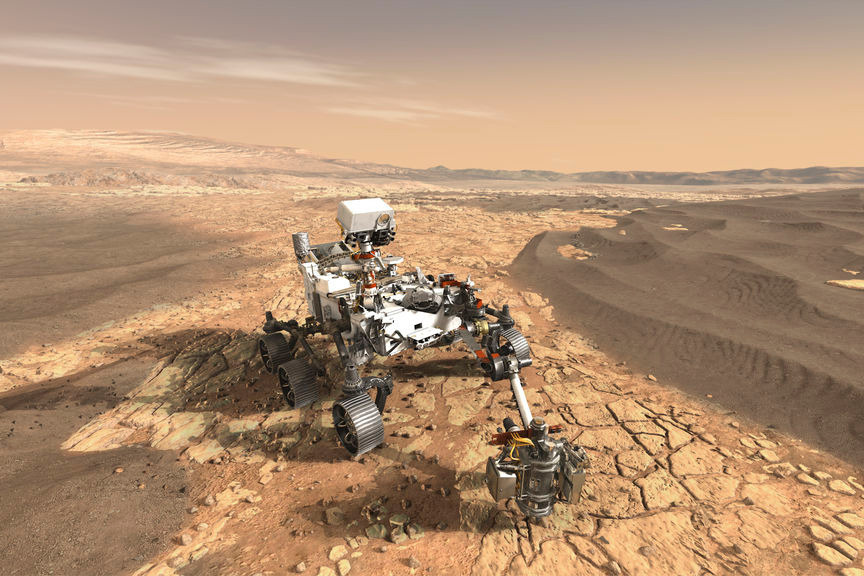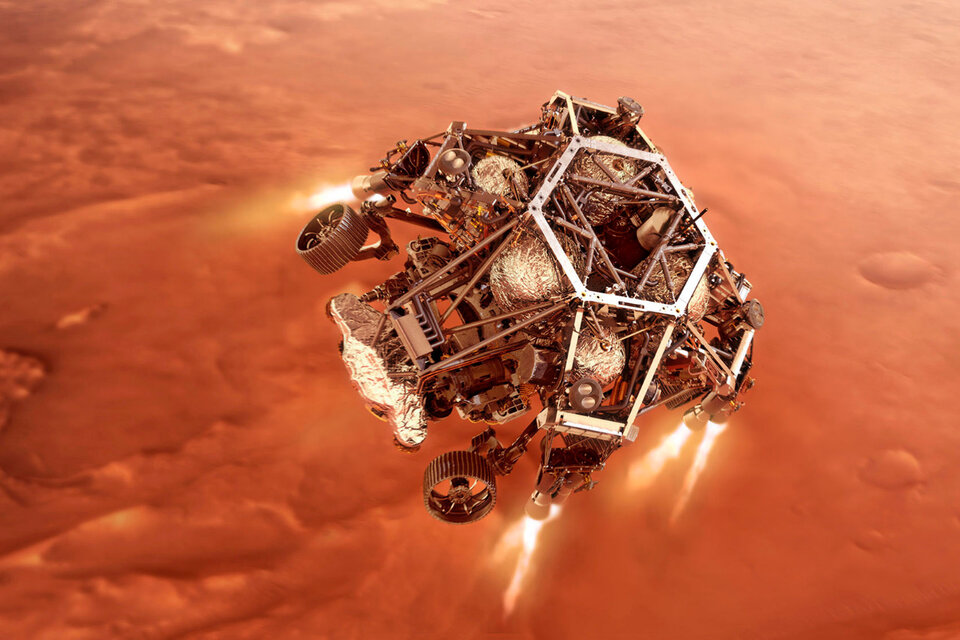After a journey of almost seven months, the NASA Perseverance rover I will try to land this thursday in Mars with the aim of finding out if the red planet still has remnants of life.
The meteorological conditions of the landing, scheduled for 20:38 GMT today (17:55 in Buenos Aires), were studied by the Astrobiology Center (CAB), associated with NASA for over twenty years, which used models from Martian environmental studies. to study the place where the explorer will arrive, the crater of Jezero.
These weather forecasts were complemented by studies of radiation and humidity, the data of which were published in a special issue of the scientific journal Space Science Reviews.
the fifth rover on mars
Perseverance will be the fifth rover to land on Mars, following the arrival of Sojourner (1997), Spirit and Opportunity (2004) and Curiosity (2012).
Perseverance is the biggest and most complex vehicle ever sent to the red planet. It was built at the Jet Propulsion Laboratory in California, weighs a ton and is equipped with a two-meter robotic arm and 19 cameras.
How will the arrival to Mars be
The robot will enter the atmosphere of Mars at a speed of 20,000 kilometers per hour with the protection of a heat shield that will activate after opening a huge supersonic parachute. Eight motors that are going to point to the ground will decelerate and then their six wheels will descend, supported by cables, until they touch the ground.
“The sky looks clear for landing. But even with clear skies, landing is the most dangerous part of the mission, and we cannot guarantee its success,” said Allen Chen, responsible for the descent, at a news conference yesterday.
Jezero Crater, landing site
The crater of Jezero, about 49 kilometers in diameter, is located in the northern hemisphere of Mars. The bed of this crater is rich in clay lake sediments, which indicates that it was a lake that dried up billions of years ago. Despite this, these sediments may have preserved remnants of life, and finding them is the main objective of Perseverance.
A Spanish instrument called “MEDA” led by the CAB travels aboard the explorer to facilitate the interpretation of meteorological measurements and to provide predictions of meteorological phenomena and seasonal changes that may affect mission operations.
CAB recalled that meteorological conditions and radiation and humidity directly influence the real possibilities of detecting signs of past life and preserving organic matter.
Scientists have investigated a complete diurnal cycle for the solstices and equinoxes (spring, summer, autumn and winter) by simulating air and ground temperatures, atmospheric pressure, wind speed and direction, and solar radiation and steam cycles.
The simulations found that the largest flux of solar radiation occurs at the autumnal equinox, the hottest season of the year in Jezero Crater, with maximum temperatures forecast reaching 27 degrees below zero, while minimum temperatures reach 84 degrees below of zero.
The models show very large fluctuations in air temperatures during the morning and afternoon, which is compatible with the strong atmospheric turbulence associated with the increase in air masses heated by strong solar radiation at that time of the Martian day.
Furthermore, the simulations revealed that the wettest season in Jezero would occur in mid-summer, with a water vapor content, which favors the interaction between the atmosphere and the soil, with fine mist occasionally occurring in early summer.

Was there life on Mars?
“TWe have very strong evidence that Mars could have sustained life in the past.. The question is: is the Earth an anomaly, a fluke? ”Ken Williford, deputy director of the mission, said on Wednesday.
Scientists are looking for the Jezero Crater, which has housed a lake some 50 km wide for more than 3.5 billion years, which they call biosignatures: remnants of microbial life that “can take all kinds of forms “such as “chemicals” or “environmental changes.” said Mary Voytek, director of NASA’s astrobiology program.
“Astrobiologists have dreamed of this mission for decades. Either we find life, and that would be an exceptional find, or we won’t and that will imply that not all habitable environments are inhabited”, clarified Ken Farley, a member of the project.
Other Mission Objectives
The first months of the mission will not be dedicated to this first objective, but to parallel experiments. NASA wants demonstrate that it is possible to drive a motor vehicle on another planet.
O ingenious helicopter will try to rise in the air with a density equivalent to 1% of the Earth’s atmosphere. Two microphones have the function of recording the sound of the red planet.
The US aerospace agency will also experiment with oxygen production on Mars. An instrument called MOXIE, the size of a car battery, should be able to produce up to 10 grams of oxygen in an hour, sucking carbon dioxide out of the atmosphere in a process similar to that of a plant.
This oxygen can be used to breathe by humans who go to Mars in the future., but also as fuel.
.

